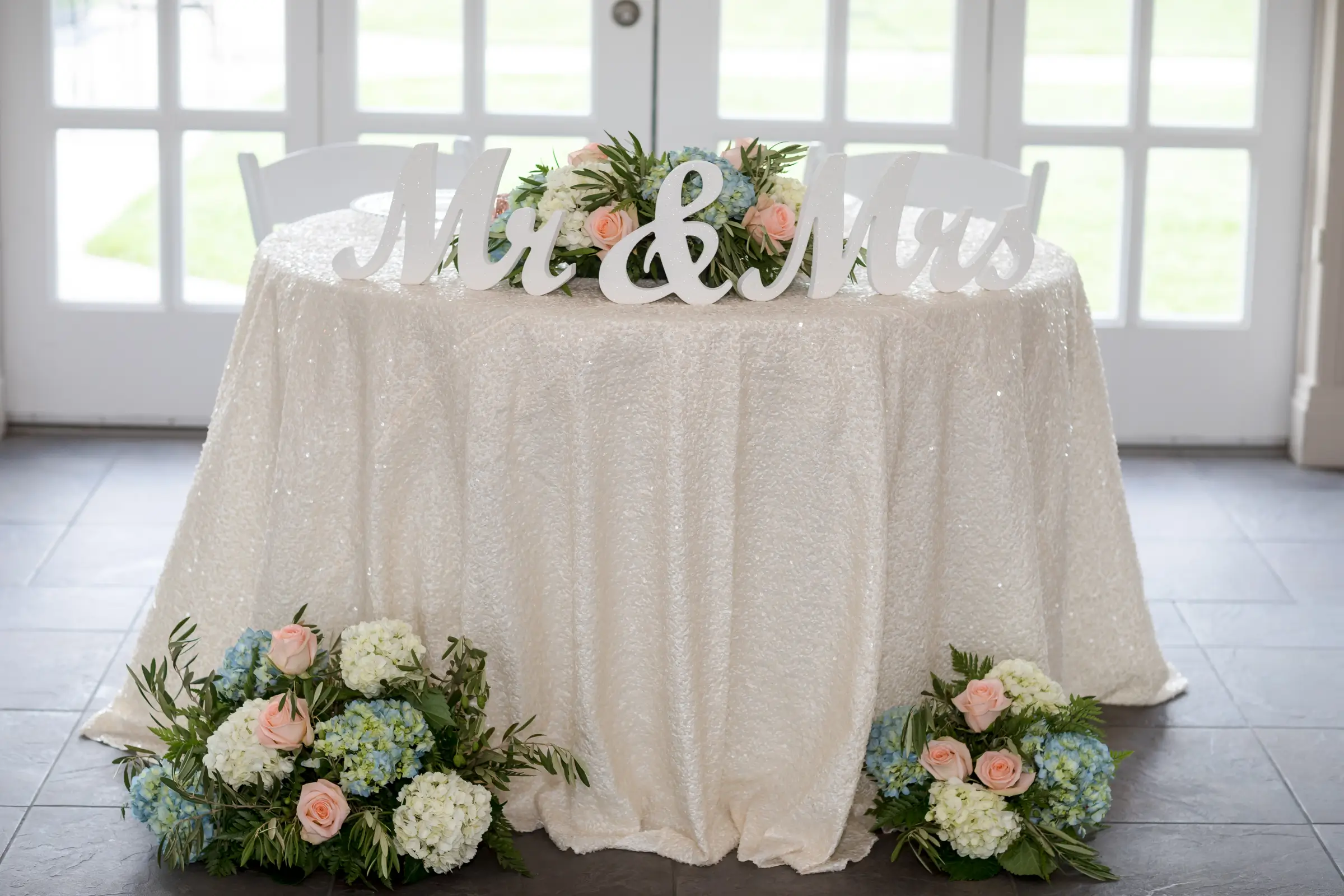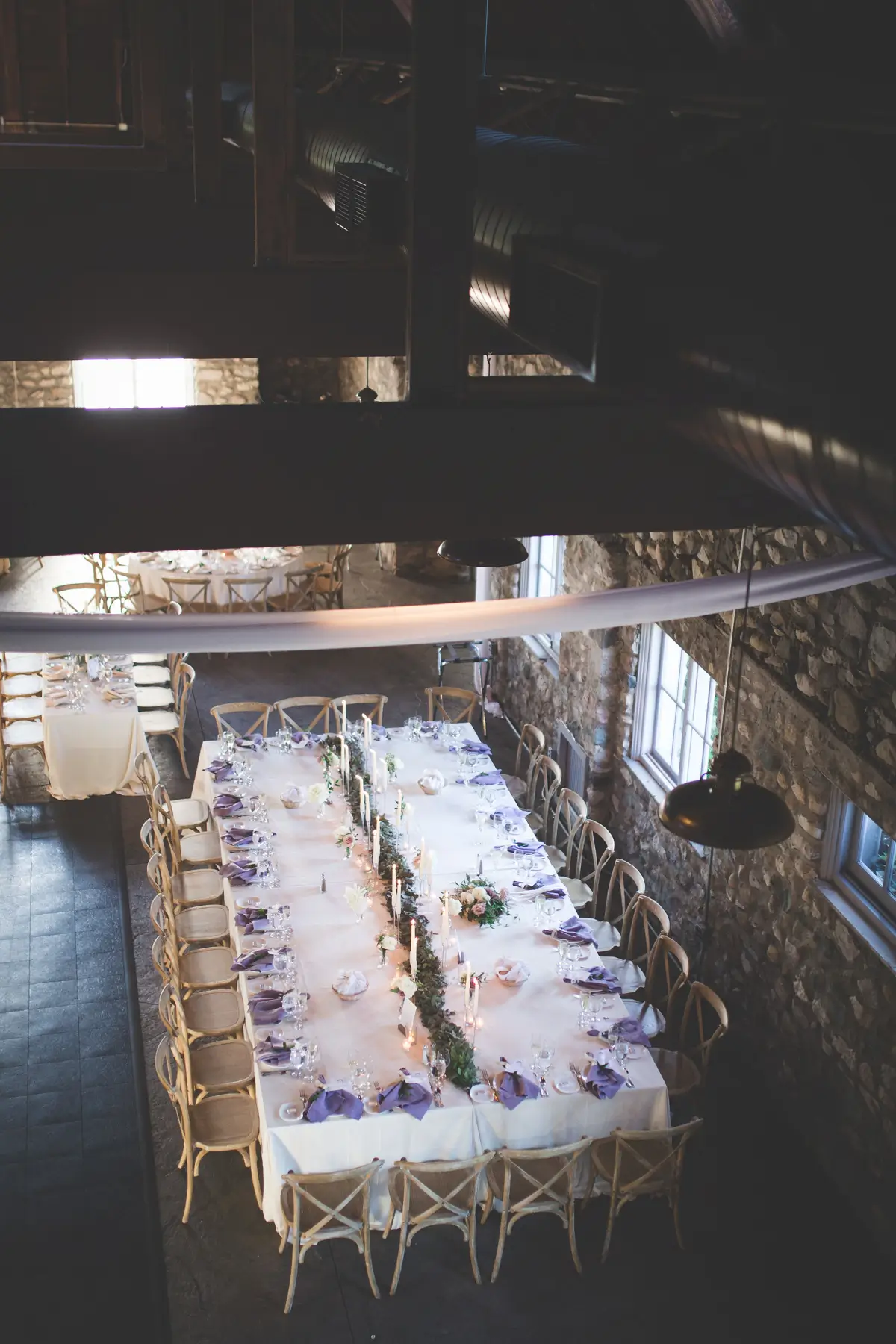When it comes to planning a wedding reception, one crucial decision is determining the seating arrangement, particularly the head table. The head table serves as the focal point of the reception and is where the couple, along with their wedding party, sit. However, there are various head table options to consider, each with its own set of pros and cons. In this blog post, we’ll explore different head table configurations and help you make an informed decision for your special day.
1. Traditional Head Table
The traditional head table setup features a long table where the couple sits at the center, flanked by the entire wedding party on either side. This configuration allows for an elegant and formal look.

Pros:
- Enhanced visibility: The traditional head table offers maximum visibility for guests, making it easier for everyone to see and interact with the couple.
- Bonding with the wedding party: Sitting together creates a sense of camaraderie, allowing the couple and wedding party to share special moments throughout the reception.
Cons:
- Isolating Wedding Party: If your wedding party members are in a relationship or have children then the traditional head table prevents them from sitting with those individuals.
- Space requirements: The long table requires ample space, which may pose a challenge in venues with limited room capacity.
2. Sweetheart Table
A sweetheart table consists of a small table where only the couple sits. It offers an intimate and romantic setting for the newlyweds.
Pros:
- Intimate atmosphere: A sweetheart table allows the couple to have a private space to share their first meal as a married couple, fostering an intimate ambiance.
- Focus on the couple: With no distractions, the sweetheart table ensures that all attention is on the newlyweds, allowing for meaningful conversations and stolen glances.
Cons:
- Limited interaction: The couple may miss out on enjoying the company of their wedding party throughout the dinner.
- Awkward space utilization: Depending on the venue layout, a sweetheart table might create an empty space that could have been utilized for additional seating or decorations.
3. Family-Style Head Table
A family-style head table incorporates immediate family members, such as parents and siblings, seated alongside the couple and wedding party. This option promotes inclusivity and a warm familial atmosphere.
Pros:
- Inclusive environment: By involving immediate family members, the couple can ensure that their loved ones feel connected and part of the celebration.
- Support system: Having family members close by offers emotional support and creates a sense of unity during the reception.
Cons:
- Limited space: A family-style head table may require a larger area, as it accommodates more people. This could pose a challenge if the venue has space limitations.
- Potential conflicts: Depending on family dynamics, seating certain individuals together may result in conflicts or discomfort. It’s important to consider these factors before opting for a family-style head table.
Choosing the right head table configuration for your wedding is a personal decision that should align with your vision and preferences. Whether you prefer the traditional, sweetheart, family-style head table, or some alternative version or combination of the options there is no wrong way to have a head table! Consider factors such as the size of your wedding party, venue capacity, and the desired atmosphere to make an informed choice. Remember, the ultimate goal is to create a memorable and enjoyable experience for you, your partner, and your guests on your special day.

